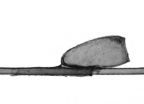(Press-News.org) Increased brain cell activity boosts brain fluid levels of a protein linked to Alzheimer's disease, according to new research from scientists at Washington University School of Medicine in St. Louis.
Tau protein is the main component of neurofibrillary tangles, one of the hallmarks of Alzheimer's disease. It has been linked to other neurodegenerative disorders, including frontotemporal dementia, supranuclear palsy and corticobasal degeneration.
"Healthy brain cells normally release tau into the cerebrospinal fluid and the interstitial fluid that surrounds them, but this is the first time we've linked that release in living animals to brain cell activity," said senior author David M. Holtzman, MD. "Understanding this link should help advance our efforts to treat Alzheimer's and other neurodegenerative disorders associated with the tau protein.
The study appears online in the Journal of Experimental Medicine.
Tau protein stabilizes microtubules, which are long columns that transport supplies from the center of the cell to the distant ends of the cell's branches. Some tau in the cell is not bound to microtubules. This tau can become altered and clump together inside brain cells, forming structures called tangles. Scientists have tracked the spread of these clumps through brain networks in animal models.
"In Alzheimer's disease, you first see clumps of tau in a region called the entorhinal cortex, and then in the hippocampus, and it continues to spread through the brain in a regular pattern," said Holtzman, the Andrew B. and Gretchen P. Jones Professor and head of the Department of Neurology. "In another disorder, supranuclear palsy, tau clumps first appear in the brain stem and then spread to regions that the brain stem projects to."
These regular patterns of tau spread through brain networks have led scientists to speculate that dysfunctional tau travels to different brain regions via synapses — the areas where individual nerve cells communicate with each other.
Holtzman's results support this hypothesis, showing that when nerve cells "talk" to each other, tau levels go up in the fluids between those cells, suggesting that brain cells are secreting tau when they send signals.
So far, the researchers only have been able to measure single copies of tau in brain fluid, not the tau clumps. They are looking for a way to detect the clumps. If brain cells can secrete and take in clumps of tau, the scientists believe, these clumps may cause previously normal tau in the receiving cell to become corrupted, fostering the spread of a form of tau involved in disease.
"We also want to know whether brain cells are secreting tau as waste or if tau has a function to perform outside the cell," Holtzman said. "For example, there have been hints that tau may modulate how easy or difficult it is to get brain cells to communicate with each other."
INFORMATION:
This study was supported by the Tau Consortium and the Japan Society for the Promotion of Science.
Yamada K, Holth JK, Liao F, Stewart FR, Mahan TE, Jiang H, Cirrito JR, Patel TK, Hochgräfe K, Mandelkow E-M, Holtzman DM. Neuronal activity regulates extracellular tau in vivo. Journal of Experimental Medicine, published online Feb. 18, 2014. DOI: 10.1084/jem.20131685
Washington University School of Medicine's 2,100 employed and volunteer faculty physicians also are the medical staff of Barnes-Jewish and St. Louis Children's hospitals. The School of Medicine is one of the leading medical research, teaching and patient-care institutions in the nation, currently ranked sixth in the nation by U.S. News & World Report. Through its affiliations with Barnes-Jewish and St. Louis Children's hospitals, the School of Medicine is linked to BJC HealthCare.
Brain cell activity regulates Alzheimer’s protein
2014-02-25
ELSE PRESS RELEASES FROM THIS DATE:
'How well did you sequence that genome?' NIST, consortium partners have answer
2014-02-25
In December 2013, the U.S. Food and Drug Administration approved the first high-throughput DNA sequencer (also known commonly as a "gene sequencer"), an instrument that allows laboratories to quickly and efficiently sequence a person's DNA for genetic testing, medical diagnoses and perhaps one day, customized drug therapies. Helping get the new device approved was another first: the initial use of a reference set of standard genotypes, or "coded blueprints" of a person's genetic traits. The standard genotypes were created by the National Institute of Standards and Technology ...
Talking in 3-D: Discussing and administrating complex construction models via a web browser
2014-02-25
Redevelopment of the London King's Cross station and the nearby neighborhood was announced in 2005 and completed with a grand opening in 2012. The internationally well-recognized engineering services firm Arup, famous among other things for their work on the Opera House in Sydney, Australia, and the Allianz Arena in Munich, worked on this 400 million pound construction project. In the process, the area to the north of the station including 50 new buildings, 2,000 new apartments, 20 new streets and ten new public squares was being renewed. Thus, a great challenge was to ...
Air Force aircraft returned from Vietnam is postwar source of Agent Orange contamination
2014-02-25
February 25, 2014 -- From 1971-1982, Air Force reservists, who flew in 34 dioxin-contaminated aircraft used to spray Agent Orange and returned to the U.S. following discontinuation of the herbicide spraying operations in the Vietnam War, were exposed to greater levels of dioxin than previously acknowledged, according to a study published today in Environmental Research by senior author Jeanne Mager Stellman, PhD, professor emerita at the Mailman School of Public Health's Department of Health Policy and Management.
"These findings are important because they describe ...
New clues found to preventing lung transplant rejection
2014-02-25
Organ transplant patients routinely receive drugs that stop their immune systems from attacking newly implanted hearts, livers, kidneys or lungs, which the body sees as foreign.
But new research at Washington University School of Medicine in St. Louis suggests that broadly dampening the immune response, long considered crucial to transplant success, may encourage lung transplant rejection.
In a surprising discovery, the researchers found that newly transplanted lungs in mice were more likely to be rejected if key immune cells were missing, a situation that simulates ...
Ordinary conditioner removes head lice eggs as effectively as special products
2014-02-25
Eggs from head lice, also called nits, are incredibly difficult to remove. Female lice lay eggs directly onto strands of hair, and they cement them in place with a glue-like substance, making them hard to get rid of. In fact, the eggs are glued down so strongly that they will stay in place even after hair has been treated with pediculicides -- substances used to kill lice.
Some shampoos and conditioners that contain chemicals or special oils are marketed as nit-removal products. However, new research just published in the Journal of Medical Entomology shows that ordinary ...
Research links risky behaviors of gambling and sex
2014-02-25
February 25, 2014 -- Late adolescence is a period when many youth become involved in high-risk behaviors with adverse consequences. Researchers at the Mailman School of Public Health with colleagues at Johns Hopkins University studied the degree to which two such behaviors, adolescent sexual behaviors and gambling, affected African American youth in nine primary schools in Baltimore, MD. In data collected from a cohort study, they assessed whether certain adolescent sexual behaviors linked with unintended consequences such as adolescent pregnancy and sexually transmitted ...
Dartmouth-led research shows temperature, not snowfall, driving tropical glacier size
2014-02-25
Temperature, not snowfall, has been driving the fluctuating size of Peru's Quelccaya Ice Cap, whose dramatic shrinkage in recent decades has made it a symbol for global climate change, a Dartmouth-led study shows.
The findings support many scientists' suspicions that tropical glaciers are rapidly shrinking because of a warming climate, and will help scientists to better understand the natural variability of past and modern climate and to refine models that predict tropical glaciers' response to future climate change.
The study appears in the journal Geology. A PDF ...
PFC exposure may spark metabolic changes in overweight children
2014-02-25
Washington, DC—Overweight children who were exposed to higher levels of perfluorinated chemicals tended to show early signs of developing the metabolic syndrome, according to a new study published in The Endocrine Society's Journal of Clinical Endocrinology & Metabolism.
The term metabolic syndrome describes a cluster of risk factors that increase the chances of developing heart disease, stroke and diabetes. The study is the first to find changing metabolic markers in children were associated with exposure to perfluorinated chemicals (PFCs), common industrial chemicals ...
Vitamin D deficiency may compromise immune function
2014-02-25
Washington, DC—Older individuals who are vitamin D deficient also tend to have compromised immune function, according to new research accepted for publication in the Endocrine Society's Journal of Clinical Endocrinology & Metabolism (JCEM).
Vitamin D plays an important role in helping the body absorb calcium needed for healthy bones. The skin naturally produces vitamin D when it is exposed to sunlight. People also obtain smaller amounts of the vitamin through foods, such as milk fortified with vitamin D. More than 1 billion people worldwide are estimated to have deficient ...
Tissue repair drug helps heal diabetic foot ulcers
2014-02-25
Washington, DC—Patients were twice as likely to have a diabetic foot ulcer heal within eight weeks when they were treated with a tissue repair drug versus a placebo, according to new research accepted for publication in the Endocrine Society's Journal of Clinical Endocrinology & Metabolism (JCEM).
Foot ulcers are a common complication from diabetes than can lead to hospitalization and lower limb amputation. In 2006, about 65,700 non-traumatic lower-limb amputations were performed in people with diabetes, according to the Centers for Disease Control and Prevention. Up ...




